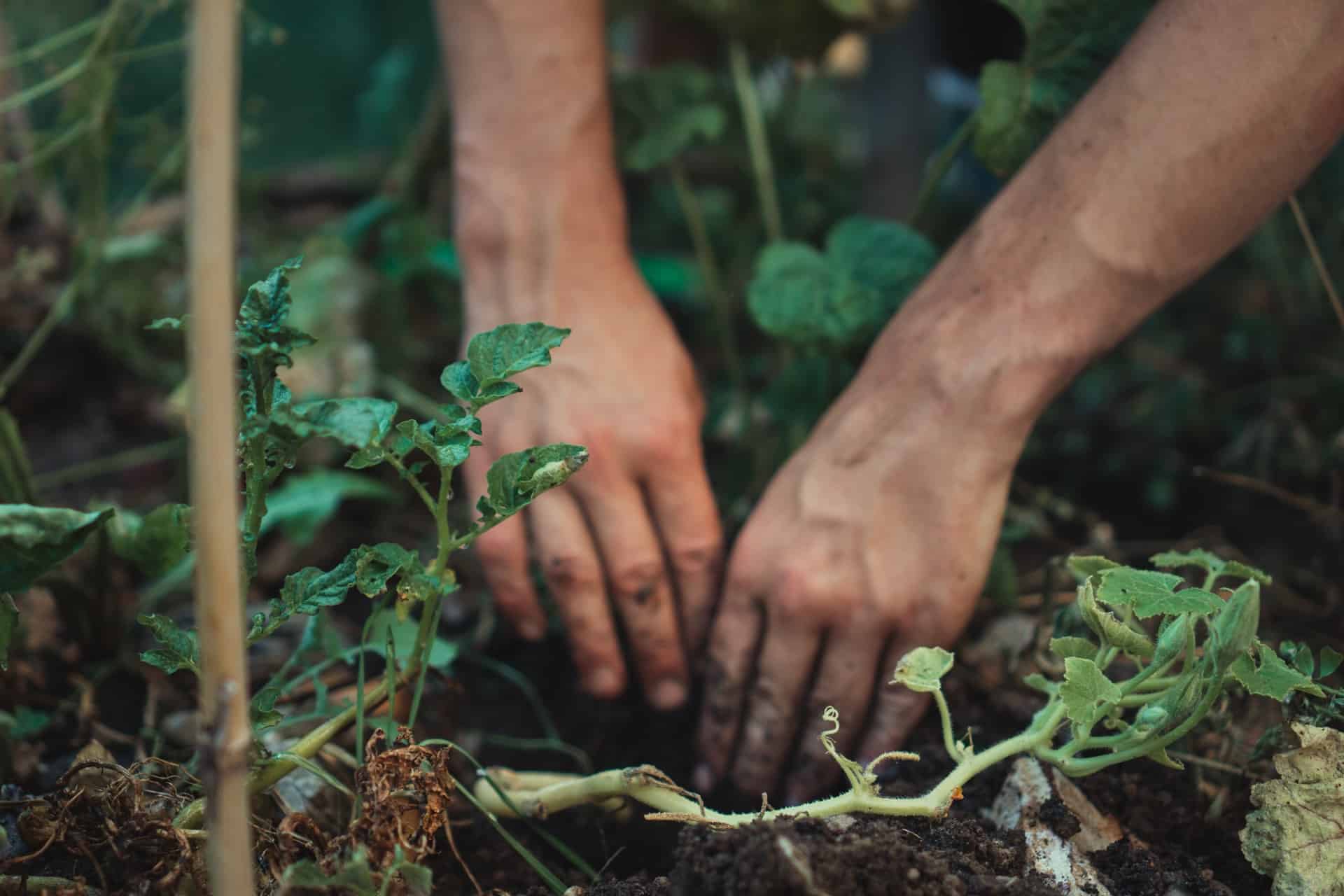
How to Turn Your Yard into a Healthy Ecosystem

The recent COP26 climate conference was overwhelming for many of us. The conference highlighted the scale of our climate crisis and the need for collaboration at the international level.
For most, the conference left feelings of disconnection and being overloaded. However, we must not forget we can make a real difference — even if it’s just in our local ecosystem.
An environmentally-friendly garden allows you to reconnect with nature while you create a relaxing oasis — it also supports your local wildlife, and promotes the general health of your local ecosystem.
To transform your yard into this healthy mini-ecosystem, take a look below.
Plan First
Planning and preparation is an integral stage of gardening — it’s also great fun. Laying out blueprints, pulling tape, designing, and mind mapping allow you to organize your thoughts so you can centralize the ecosystem in your next garden plan.
You should try to learn about your local environment while you plan your garden. In particular, you research the following variables:
- Soil quality
- Local flora and fauna
- Wildlife and their diets
- Diseases specific to your area
The easiest way to learn about your local environment is to visit a nearby botanical garden and take notes. Botanical gardens almost always feature native flora and fauna and can give you great insight into best practices. By investing time and effort into researching your local area, you will streamline the process of gardening and will also ensure you don’t harm the local ecosystem.
Let it Grow
Allowing your shrubs and grass to grow can invite insects into your garden and provide a welcome refuge for traveling mammals, insects, and birds.
Allowing your garden to grow out a little is also in fashion. Big-name gardeners like the BBC’s Monty Don say wild meadows can look fantastic and will provide your garden with some beautiful structure. Monty Don recommends cutting back your mini-meadow around August every year. When you do cut it back, aim for the same length as the rest of your lawn as this allows nutrients back into the ground.
You can also let some of your larger bushes grow out, as these often provide welcome homes for birds and small mammals. If you’re keen on introducing some birds into your garden, make sure you aren’t disturbing your bushes at or before springtime, as this is when most chicks hatch.
Water Features
Our world is warming, and wild animals’ ecosystems have been reduced drastically. This means many animals are now venturing into our gardens to find refuge and cool off. As such, a great way to help wildlife is to include some kind of water source in your backyard.
If you have a large garden, provide a pond as the perfect habitat for wildlife. Ponds are mini-ecosystems in their own right and attract insects, mammals, and birds. If you have a smaller garden, small water dishes will still draw in wildlife and help you expand the ecosystem living in your garden.
Your water feature should minimize water usage and be sustainable. The average US household already uses 300 gallons of water per day — a water feature for the garden should not add to that figure. Instead, your water feature should draw from collected rainwater or should recirculate the water you do add from hoses or taps.
Structure for Wildlife
If you’re keen on wildlife, then it’s worth structuring your garden to invite animals in. While birds and insects can typically fly into and out of your garden, larger animals will need a clear access route to enjoy your bountiful mini-ecosystem.
The best way to create an access route into and out of your garden is to simply remove or lower fencing. This also allows you to control the direction and size of the traffic which enters and leaves your garden. If you want small animals like hedgehogs or foxes to enter your garden, then you can create a kind of all-purpose dog-flap in fence panels. If you want all manner of animals to roam about your green space, then remove the fence altogether.
If you are planning on inviting animals into your backyard, you must ensure the space is safe for them. Do not use fertilizer or poison (neither of which you should use anyway) and double-check the soil you are using for flower beds and vegetable patches is non-toxic.
Grow Your Own
There’s no greater joy than digging up your own carrots or plucking a tomato straight off the vine. Growing your own fruit and vegetables is a great way to reconnect with nature, and may positively impact your local ecosystem.
Not only will growing your own produce benefit your diet, but it also reduces your carbon footprint. You can also use the scraps to compost or feed local birds, insects, and mammals.
If you don’t know where to start, the easiest fruit and vegetables are:
- Carrots
- Potatoes
- Tomatoes
- Strawberries
Root vegetables can grow in practically any environment — even old soil bags. Fruit, in addition, can be low maintenance. Fruit like tomatoes and strawberries just need sunlight, decent peat-free potting soil, and regular watering to produce a great harvest.
Bring it In
When the weather turns and the days get shorter, it’s easy to neglect your garden and allow things to deteriorate outside. You can stay connected to your local ecosystem by planting winter-flowering plants like honeysuckles and pansies. These plants will maintain your interest in the yard and will keep you invested in other winter jobs like mulching and composting.
You can also bring some of your plants in during the winter seasons. Indoor plants make for great decoration and can help make your house into a green space. Be careful, though — if you just bring perennials in without acclimatizing them, they may lose leaves and wilt.
With a few simple steps and a good helping of elbow grease, you can transform your backyard from a sterile green carpet into a thriving ecosystem. This will help galvanize your sustainability efforts and will encourage you to complete eco-friendly activities like composting and mulching.



Maryann Farrell
Great article and way of life. I saw this while looking up tiny eco yards. My yard has everything in it so far, except for a water source besides bird baths and pans on the ground hidden in gardens catching rain water or water from when I water some of my plants occasionally.
I’d love to start a vernol pool for the tree frogs that some how made it to my property the last 8 years. Every June my yard becomes the Festival of Lights and everyone walking by is amazed and fascinated especially kids. The lightening bugs are only in my yard for at least an entire block and so many people walk their dogs and kids by to s the lightening bugs fly out of my untouched area most of June. My yard is filled with 100’s of birds unlike all my neighbors yards. Praying mantis’ as well. I get an occasional fox, lots of raccoons, skunks, opossums, chipmunks and squirrels. Sometimes a flock of turkey will pass through and this is all amazing since I am in the middle of a suburb with 100’s of houses around. We’re blessed by our town leaving pockets of trees alone to stay as well as green acres plots of land not too far from my house, maybe a half of mile. I still haven’t had the deer arrive, but maybe soon. They tend to stay across the heavy traveled road right now where I can see them all the time, but who wants to cross a heavily traveled road if you don’t have to. Now to make a 5 x 5 pond will complete it very nicely. I doubt I’ll ever get turtles sue to the roads all around, but you never know. Patience is key here. I do get red tail hawks,, smaller hawks and sometimes an owl at the end of summer and in February during their mating season. Tons of pollinators too.
A little piece of heaven amongst chaos and houses. It’s serenity and others should try it if you’d like peaceful calmness outside daily. It can help lower your stress as well as BP. Weeding out invasive weds is better than therapy with a doctor. Good luck to whoever is going to give it a go.